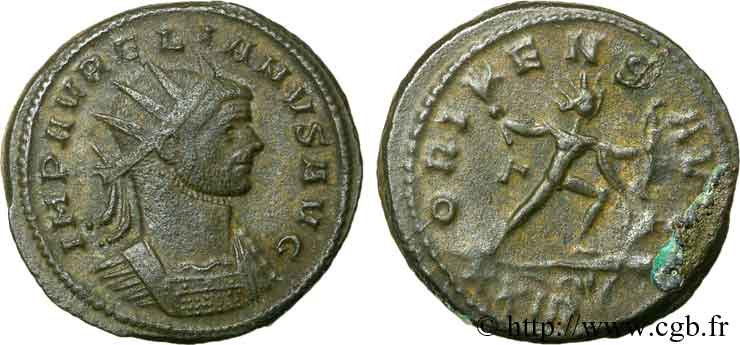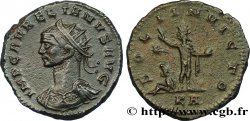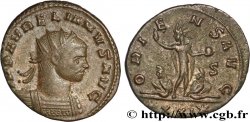v24_0618 - AURELIAN Aurelianus
MONNAIES 24 (2005)
Starting price : 145.00 €
Estimate : 200.00 €
unsold lot
Starting price : 145.00 €
Estimate : 200.00 €
unsold lot
Type : Aurelianus
Date: début - septembre 275
Date: début - septembre 275
Mint name / Town : Roma
Metal : billon
Millesimal fineness : 50 ‰
Diameter : 22,5 mm
Orientation dies : 12 h.
Weight : 6,90 g.
Officine: 3e
Emission: 11e
Coments on the condition:
Flan large. Beau portrait. Faiblesse de frappe à six heures. Patine vert olive foncé avec une petite concrétion sur la légende
Catalogue references :
Obverse
Obverse legend : IMP AVRELIANVS AVG.
Obverse description : Buste d’Aurélien, tête radiée, à droite, avec cuirasse et pan de paludamentum, vu de trois quarts en avant (B01).
Obverse translation : “Imperator Aurelianus Augustus”, (L’empereur Aurélien auguste).
Reverse
Reverse legend : ORI-ENS - AVG/ (GAMMA)|-// XXIR.
Reverse description : Sol (Le Soleil) radié, nu, le manteau sur l’épaule gauche, allant à droite, tenant un rameau d’olivier de la main droite et un arc de la gauche, posant le pied gauche sur un prisonnier mis à terre tentant de se relever.
Reverse translation : “Oriens Augusti”, (L’Orient de L’auguste).
Commentary
Exemplaire de poids extrêmement lourd (double aurelianus). La marque d’exergue semble décalée par rapport au sujet.
Extremely heavy specimen (double aurelianus). The exergue mark seems offset from the subject
Extremely heavy specimen (double aurelianus). The exergue mark seems offset from the subject








 Report a mistake
Report a mistake Print the page
Print the page Share my selection
Share my selection Ask a question
Ask a question Consign / sell
Consign / sell
 Full data
Full data






